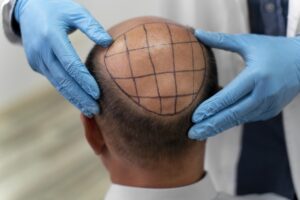Platelet-Rich Plasma (PRP) therapy has emerged as a groundbreaking medical treatment, harnessing the body’s natural healing power to address a range of health issues. From sports injuries to aesthetic enhancements, PRP therapy offers a minimally invasive, effective solution with growing popularity in the medical community. Here’s a deep dive into what PRP therapy is, how it works, and its applications.
What is PRP Therapy?
PRP therapy involves using a concentrated form of platelets derived from a patient’s own blood. Platelets are rich in growth factors that play a crucial role in healing injuries, regenerating tissues, and reducing inflammation. By isolating and amplifying these platelets, PRP therapy enhances the body’s ability to heal itself naturally.
The procedure starts with a blood draw, usually from the patient’s arm. The blood is then placed in a centrifuge, a machine that spins at high speeds to separate its components. This process isolates the platelet-rich plasma from other blood elements like red and white blood cells. The PRP is then injected directly into the targeted area to stimulate healing.
Applications of PRP Therapy
PRP therapy is highly versatile, finding use across several fields of medicine and aesthetics. Here are its primary applications:
- Orthopedic Injuries and Conditions
PRP therapy is widely used in treating musculoskeletal injuries, such as tendonitis, ligament sprains, and joint pain. For example, athletes often turn to PRP injections to recover from conditions like tennis elbow or knee injuries. - Hair Restoration
PRP injections are a popular treatment for androgenic alopecia (male and female pattern baldness). The growth factors in PRP stimulate hair follicles, promoting thicker and healthier hair growth. - Skin Rejuvenation
In dermatology, PRP is used to improve skin texture, reduce wrinkles, and treat acne scars. Known as the “vampire facial,” PRP therapy is combined with microneedling to enhance collagen production and revitalize the skin. - Chronic Pain Management
For conditions like osteoarthritis or back pain, PRP therapy provides relief by reducing inflammation and promoting tissue regeneration. - Wound Healing
PRP accelerates the healing of chronic wounds, especially in patients with conditions like diabetes that hinder natural recovery processes.
Benefits of PRP Therapy
- Minimally Invasive: PRP therapy is performed as an outpatient procedure and typically requires minimal downtime.
- Natural Healing: Since PRP is derived from the patient’s own blood, there is little risk of adverse reactions or allergies.
- Reduced Dependency on Medications: PRP therapy may reduce the need for painkillers or anti-inflammatory drugs.
Considerations and Limitations
While PRP therapy is generally safe, it’s essential to consult with a qualified healthcare professional to determine if it’s suitable for your condition. The results can vary depending on factors like the severity of the issue and the individual’s overall health. Moreover, PRP is not a quick fix; multiple sessions may be required for optimal results.
Conclusion
PRP therapy represents a leap forward in medical treatments, blending innovation with the body’s innate ability to heal itself. As research continues to expand its potential, PRP therapy promises to revolutionize how we approach healing and recovery. Whether you’re looking to manage pain, restore hair, or rejuvenate skin, PRP could be the game-changer you’ve been seeking.


